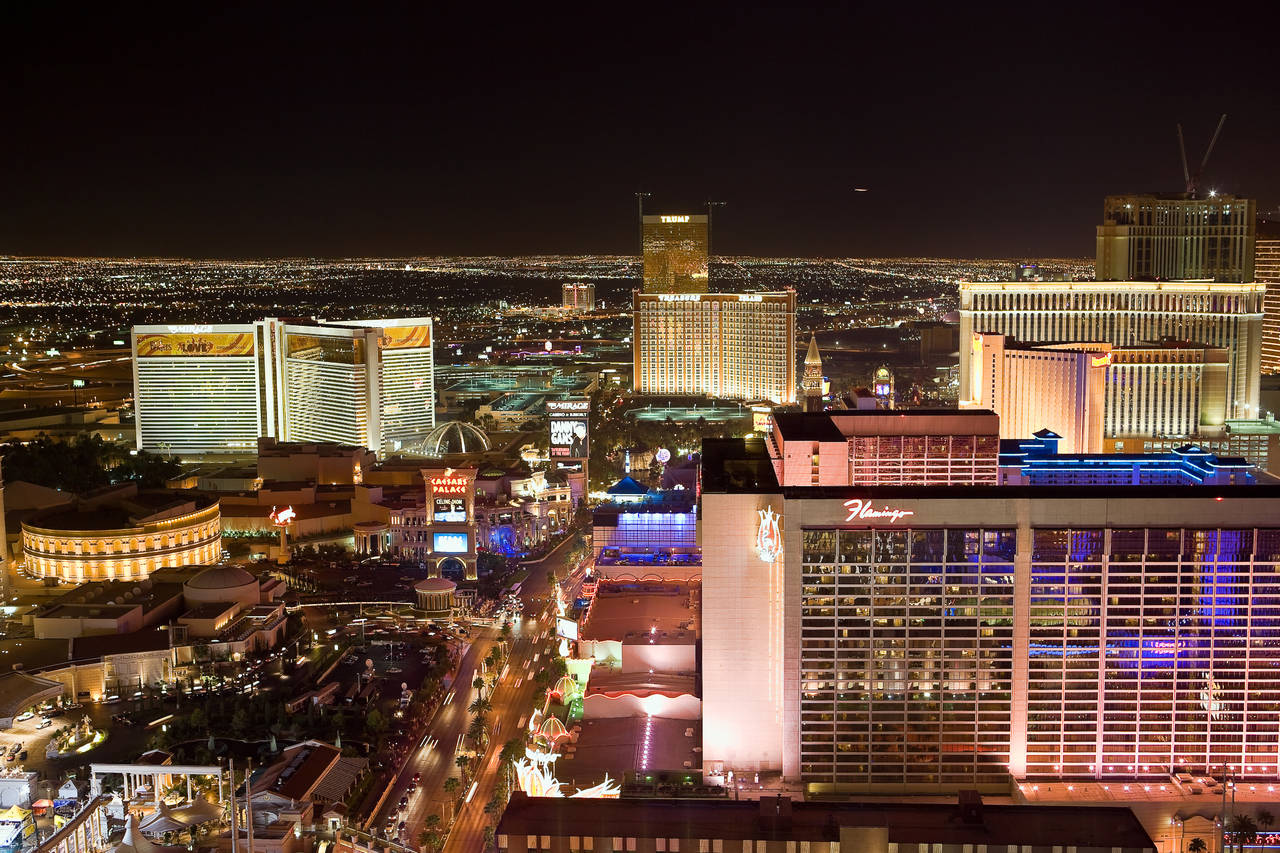Las Vegas is in the Mojave desert. It was part of Mexico until 1855; the Hispanic name means “the lawns” because there were springs in the area that allowed a number of green oases to survive. After the United States annexed the Mexican areas, a fort was built where the downtown is found today, which served as rest station for the caravans of pioneers on their way to California; in the Twentieth century it became an important railway junction for goods transports to the rest of the country. The fact of being a junction did not suffice to attract visitors and make Las Vegas become an important town in the eyes of the surrounding states. The real birth of the city did not take place until 1936, when the construction of the Hoover Dam was completed. The new complex attracted visitors from every corner of the United States; the municipality soon succeeded in absorbing the initial investment and decided to turn Las Vegas into the capital of tourism and entertainment of the whole country.
After the construction of the Hoover Dam, in 1946 the gangster Bugsy Siegel opened the Flamingo, the first casino, which proved very profitable as gambling had been legal in the city since 1931. This first complex was followed by other large structures with hotel, casino, restaurants and all the facilities necessary for the amusement of the guests. The direct successors of the Flamingo were the Mirage (1952), the Sahara (1952), the Tropicana (1957), the Stardust (1958), the Aladdin (1966), the Circus Circus (1968), the Caesar Palace (1970) and the California (1975). The idea behind the town planning of Las Vegas was to build a city cum amusement park, where everything was possible. The motto of the city soon became “What happens in Vegas stays in Vegas” , thus inviting the visitors to indulge in every whim. The architecture reflects this tendency, and the city became a patchwork of remakes of existing buildings and surreal atmospheres. This trend has continued ever since. In the Eighties and Nineties other hotels and gambling houses inspired by themes have been built. One strolls along the streets of New York and Paris, passing by Venice or enjoying the fascinating atmosphere of ancient Egypt where a great glazed Pyramid serves as backdrop for a reproduction of a sphinx. All this is found along one single boulevard, called the “Strip”, which is 6 km long. It is clear that Las Vegas is the strip, everything activity is concentrated along this axis. There are few important buildings outside this area, and they are not related to the “entertainment industry”. It is a matter of a mainly residential tissue with low buildings and public facilities as the Summerlin Library and CCSN West Charleston Campus – both by RAFI Architects – and last but not least the complex, still in construction, of the Lou Ruvo Alzheimer’s Institute, designed by one of the contemporary architects who has, more than any other, made his architectural philosophy a trade mark, namely Frank O. Gehry.
The building by the famous American archistar and the new project of the City Center – which vaunts contributions by Daniel Libeskind, Foster+Partners, Pelli Clarke Pelli Architects and Rafael Vinoly – has inspired a new way to conceive the city. The municipality wants to change the image of Las Vegas, transforming it from the capital of gambling to a holiday attraction for families and the shopping temple o the U.S.A. This is also reflected in the architectural choices. Apart from the fact that the City Center is one of the largest real estate operations funded by private capital in the history of the United States, it also represents an attempt to turn a new leaf and abandon the construction of theme buildings simulating well-known urban agglomerates, and reproduction in a smaller, but not that much smaller, scale of any American downtown area where glass skyscrapers, illuminated 24 hours a day, and shopping malls dominate the skyline. The shameless “Vegas” that never sleeps that serves as background to a melancholy and tormented Nicolas Cage in Mike Figgis’ movie “Leaving Las Vegas” will not be easy to replace. One immediately gets this impression the moment one lands in the city: there is no difference between night and day, the quantity of lights that are switched on all the time is such that the perceptions are blurred. It is not possible to transform a place for play, where all excesses are permitted, in a temple for American middle class families, even the taxi drivers the moment you enter their cars, rather than a usual good day, shout “Good Luck” and if you ask them what there is to do in the city, the answer is “Gambling…what else?” A perfect slogan because Las Vegas is really the Amusement Park of America, it is sufficient not to interfere with such a successful play.






